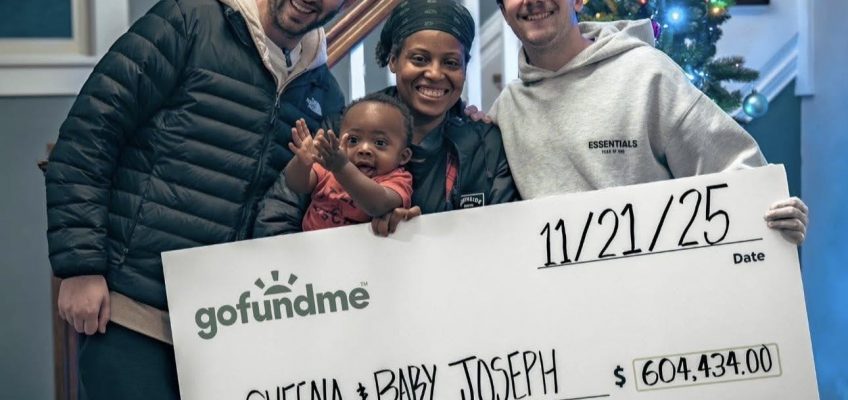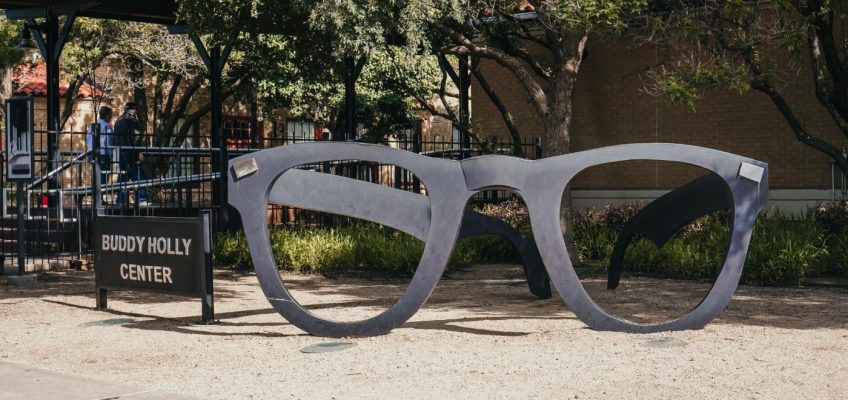Often, when Sheena Harrison stood on downtown Minneapolis streets with her 1-year-old son Joseph, she counted. The then-homeless mom assigned the value of one to every person who walked past her instead of stopping to give her a dollar.
One hundred fifty-five such dollars meant a hotel room for the night.
She dared not dream for anything more. She was overjoyed when the occasional passerby bought her a bite to eat and something to drink. A downtown neighbor of hers got her pizza and orange juice one day, consoled her, and stayed to pray with her.
“He prayed with me a lot,” Harrison said. “That one day he asked me what was wrong because I was really hungry, and the baby was hungry, he was crying and screaming.”
Ben Steine disappeared from Harrison’s life for two months, also clueless about how the woman’s life could be improved in more tangible, permanent ways.
But Steine happened to fall in with Josh Liljenquist, a Minnesota TikToker who films himself helping the needy in Minneapolis and St. Paul, with financial help from his viewers. Such a content creator is sometimes called a “kindness influencer.”
Steine signed on as Liljenquist’s videographer. The two (with Australian influencer Samuel Weidenhofer and his videographer Luka Jackway in tow) went in search of people who were down on their luck. And there, tucked against Whole Foods in downtown Minneapolis, were Sheena and Joseph.
Liljenquist bought them a sandwich and watermelon. Weidenhofer handed Harrison $500.
And “I think it was Sam who told her, ‘We’re going to start a fundraiser for you to get you off the street,’” Liljenquist said.
This is the initial video sequence that would make Harrison internet-famous.
Blessing a Homeless Mom! (GoFundMe 1N B1O)
“We were moved by her strength, her heart and the love she has for her son,” Liljenquist wrote on the GoFundMe page. “No one should have to sleep on the streets — especially not a mom and her one-year-old baby. Together we can change that.”
Harrison explains that she traveled to Chicago to help take care of her father, who had dementia. When he died, her mother kicked her and Joseph out. Since then, her priority was to “be a good mom” by landing an apartment and a job. But finding either during two months on the streets proved impossible.
Surprising success — and stress
Among the GoFundMe campaign’s now-laughably-modest goals: “Rent and utilities (we hope to secure a full year of housing).”
Before they knew it, Liljenquist and Weidenhofer had raised more than $600,000.
“I didn’t think it was going to be this crazy,” Liljenquist said. “I lost sleep. I was so stressed. You know, like I have more than half a million dollars and it’s not even my own money. … I was scared, I was really scared.”
The suddenly panicked Liljenquist did what he already does several times a day: He called his mother. Liljenquist already knew his team would be looking into buying a house — and Julie Liljenquist happens to be a Realtor.
Before long, she scoped out a property in Fairmont, Minn., two hours southwest of the Twin Cities and five blocks from where she lives and where she raised Liljenquist. She sweet-talked the current occupants into vacating early so Harrison could move in. That couple left behind toys for Joseph.
“I didn’t charge Sheena anything to do this,” Julie Liljenquist said. “I wanted a house that had the major things done. I wanted a (geographical) location where she would be safe.”
Related Articles
Broke for the holidays? 10 ideas to turn thrifting into gifting in St. Paul
They met at a St. Paul hospital. After emerging from comas. They’re getting married.
Minnesota teacher reels in viewers with educational, entertaining fishing videos
St. Paul issued 3,253 tickets, 952 tows during recent snow emergency
Eagan’s new Veteran Village opens doors to veterans experiencing homelessness
The team took other steps, such as hiring an accountant and a financial planner for Harrison. The latter, Justin Grossinger, of Northwestern Mutual in Edina, came recommended by Steine.
“It’s a fact that when people come into large sums of money, sometimes it doesn’t last and then their life’s turned upside down from something so good,” said Grossinger, who, like Julie Liljenquist, sees himself as Harrison’s protector.
“When people come into large sums of money regardless of it being a lottery winner or an inheritance or anything, sometimes the people around them come out of the woodwork,” Grossinger said. “I don’t know how else to say that cleanly, right? But sometimes people that weren’t there for us when we needed them want to be now.”
Big reveal
Josh Liljenquist made a potentially controversial request of Harrison — he asked her not to monitor the GoFundMe page even though the money accumulating there belongs to her. “Just let it be a surprise,” he told her, and she agreed.
Liljenquist and Weidenhofer wanted dramatic “reveal” video, and they got it.
Harrison was led blindfolded to the front of the house. Instructed to remove the blindfold and turn around, her mouth became an “O” as the realization hit. Entering the front door, she saw photos by Jackway on all the walls.
“It’s the greatest family I got!” @Samuel Weidenhofer
“It was when she looked at a poster on the wall of her holding up her son that she burst into tears,” Jackway recalled.
“The picture says, ‘Welcome home,’” Harrison said. “I broke down crying. I didn’t know what to say. I’ve never had people who are strangers come into my life and change it in a weekend and a half.”
Julie Liljenquist had stocked the house with furniture from her home, including a favorite couch of her son’s.
Sheena Harrison cooks Thanksgiving dinner in her new Fairmont, Minn., home. (Courtesy of Luka Jackway)
Harrison settled in — though sometimes waking with a start in the middle of the night, wondering where she was.
Harrison was thrilled to be able to host the Liljenquist family, Weidenhofer, the two videographers and others for Thanksgiving.
She went to church. “Everyone there was so loving and so welcoming,” she said.
Harrison discovered that she and Josh Liljenquist share a birthday, Dec. 29.
“So now Josh is a permanent brother,” she said. “So he is just a permanent baby brother.”
She added, “I think I am happier about gaining a family than I am about the money.”
Related Articles
Eagan’s new Veteran Village opens doors to veterans experiencing homelessness
Crayon therapy: St. Paul minister creates, donates coloring books for women in shelters
Blue Cross Blue Shield of Minnesota meets with Silver Sneakers protesters
Saintly City Snow Angels — connecting St. Paul shovelers with snowy sidewalks — needs more angels
Treasury Department investigating claims MN fraud funded terrorists




